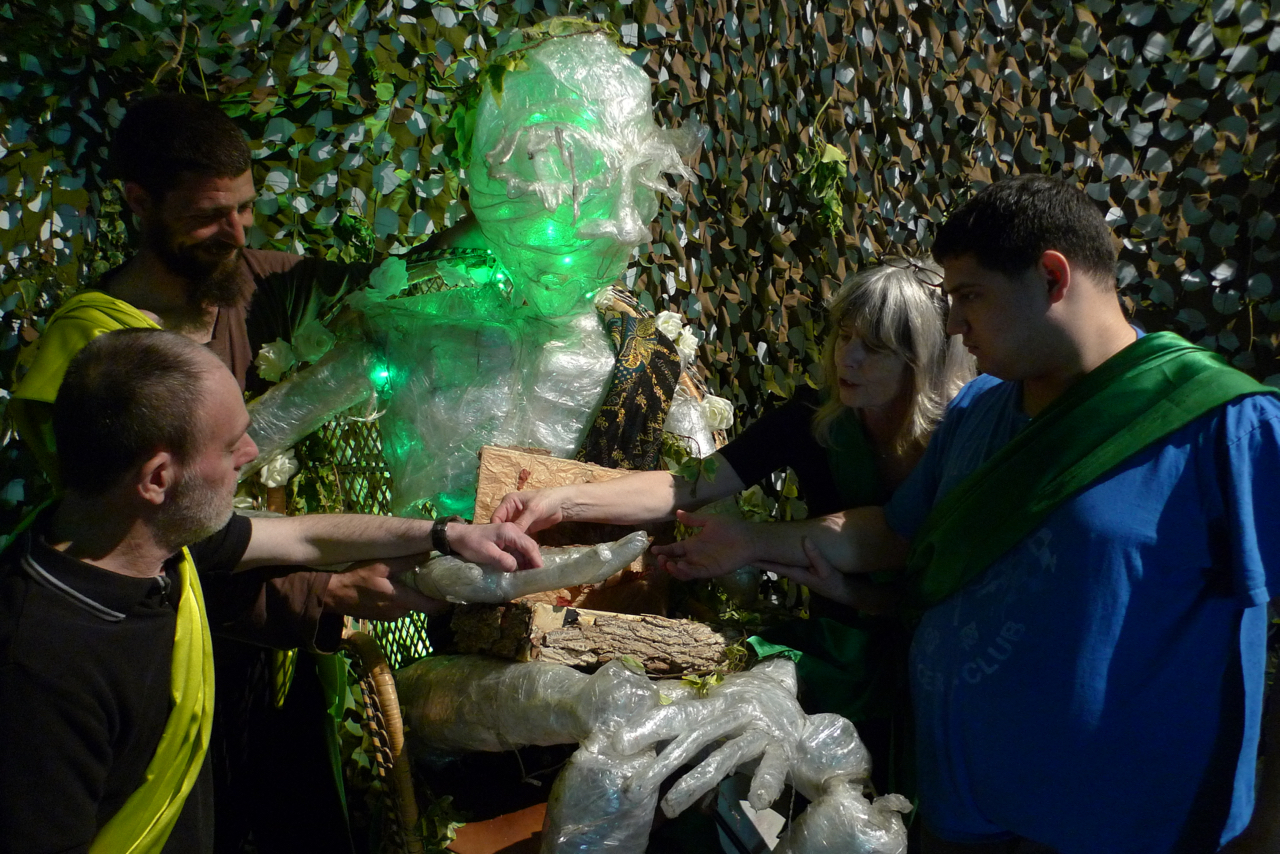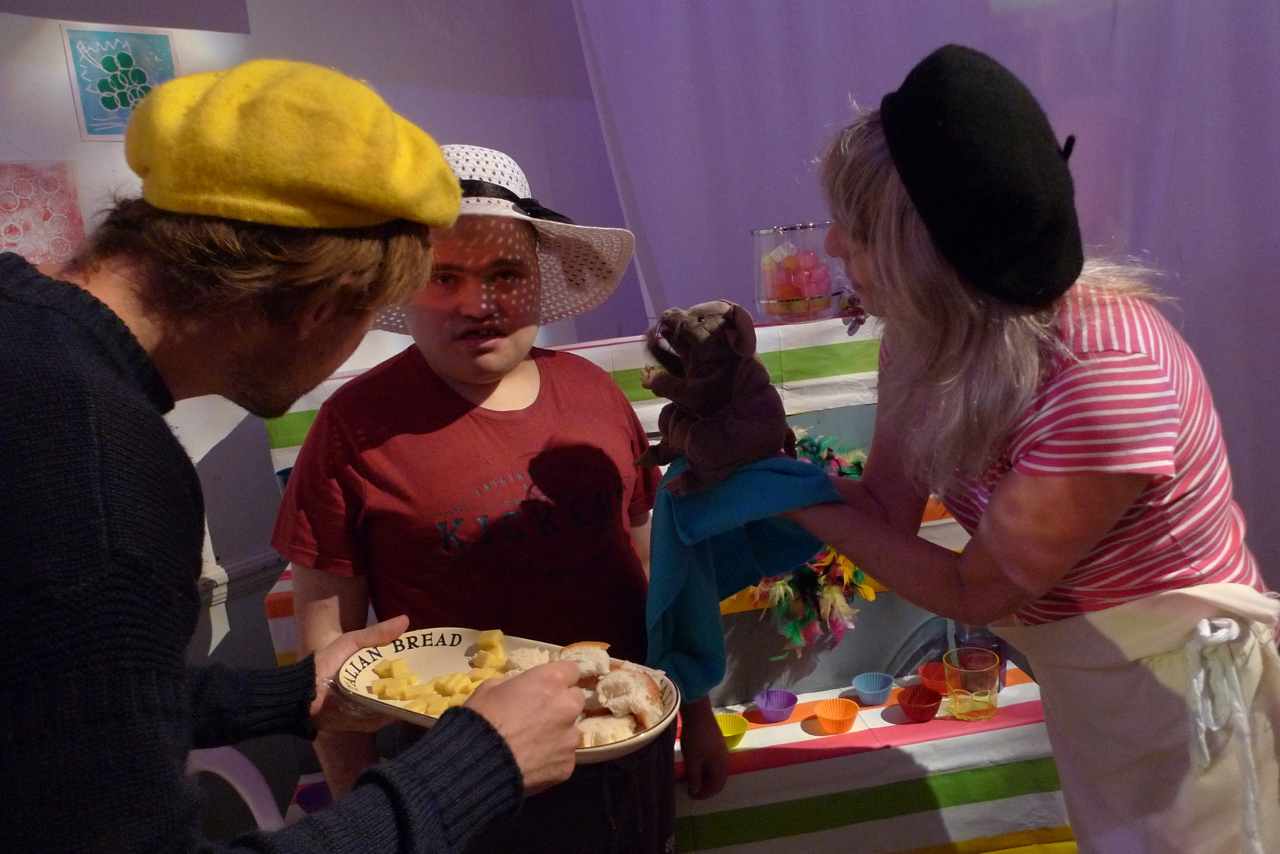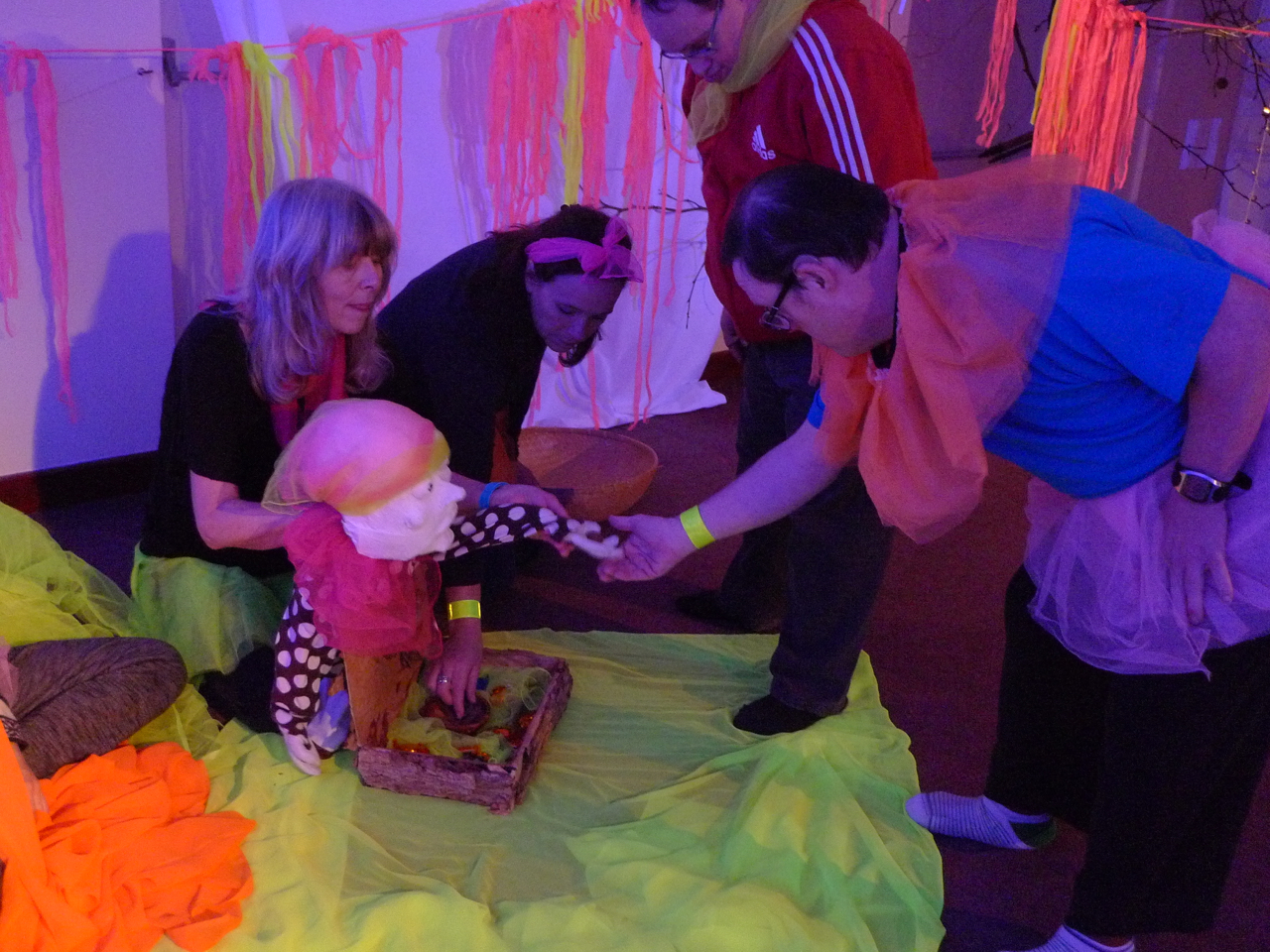Puppets
In response to the positive interactions we have witnessed over the years, puppets have become an extremely important tool in our kit. Some are 'home-made', others bought, but all have essential qualities and characteristics. They are visually, kinaesthetically and texturally arresting and often used with accompanying sounds/vocals to engage attention. They can inspire humour and slapstick, but can also be viewed with wonder and delight. They provide a tactile link between facilitator and client and many students who generally avoid eye-contact will look straight at a puppet's face without anxiety, perhaps because the facial expression (so confusing for many people) does not change. It is the body language that provides the clues.
Puppets can easily be made. Layering stretchwrap over a simple withy or white pipe frame can create any creature of your choice. By adding a beautiful piece of cloth and wig/headdress to a polystyrene head it is possible to construct a character quite simply. Or craft a head from 'Newclay', add a cloth costume and a glove for endless options.
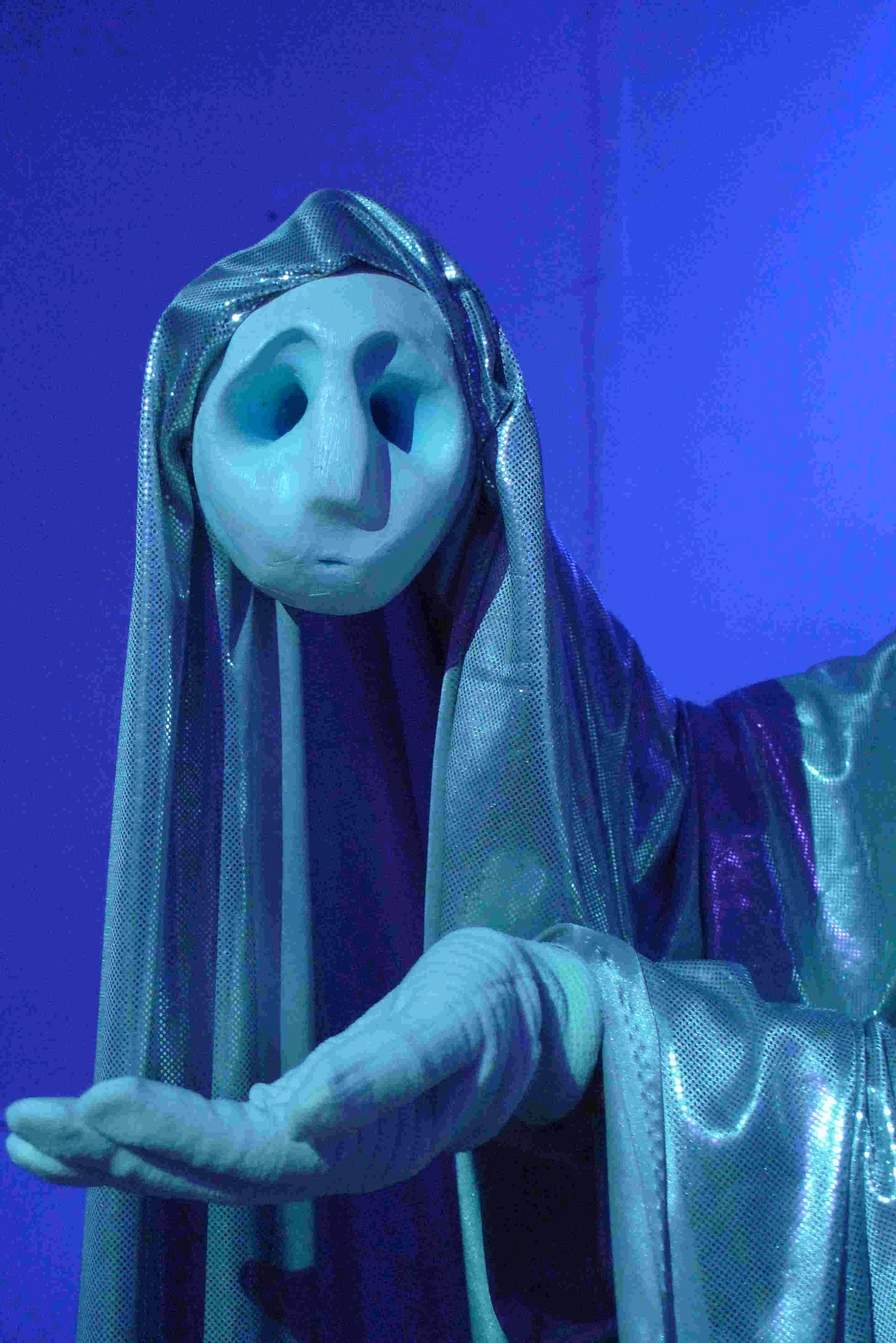
Alien
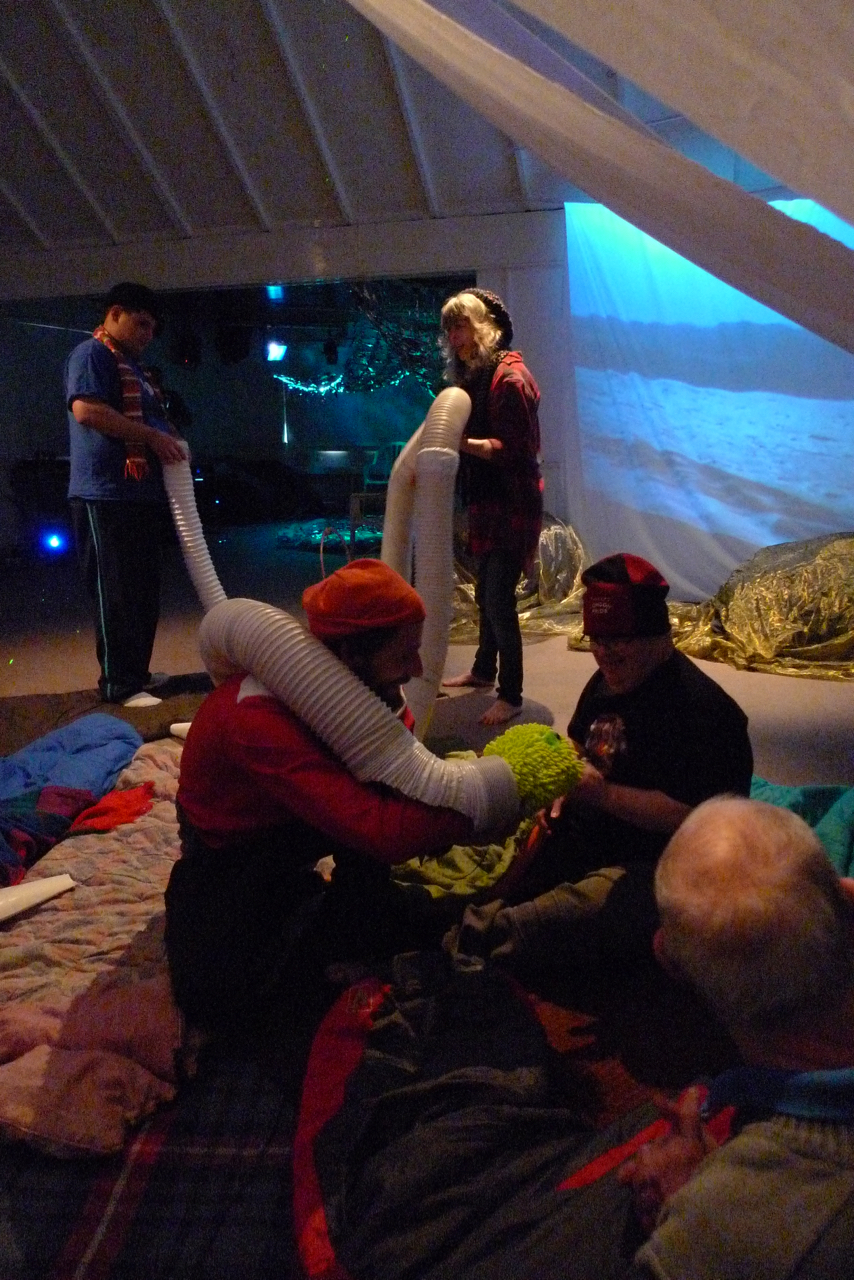
Nessie
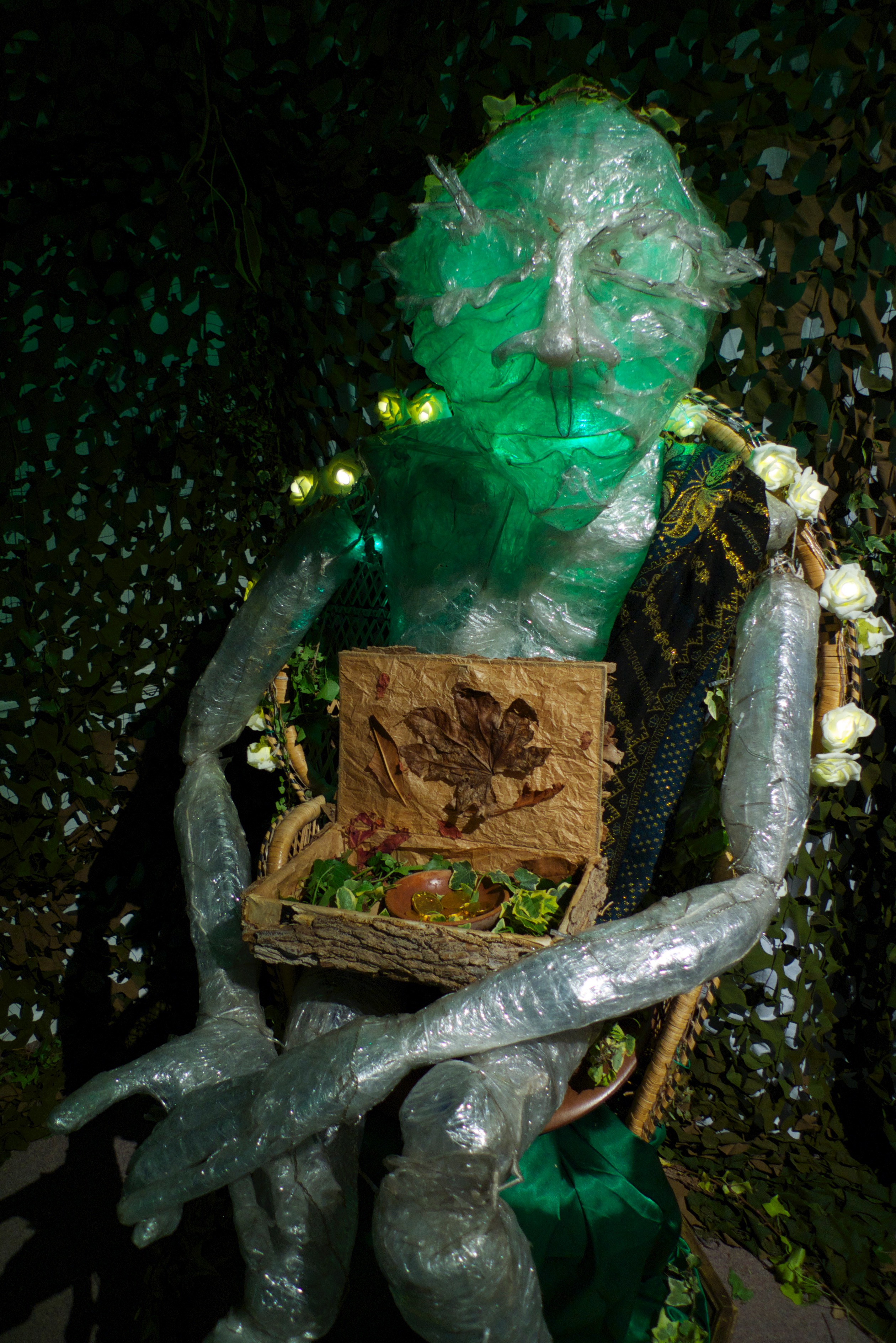
Finn McCool

Snow Queen
Take your lead from the participants’ responses. If someone seems anxious, stay low, calm, quiet and tentatively encourage interaction. Start at a safe distance, side-on, and gradually get closer if the participant approves. If clients are playful, respond in kind, if vocal, sing along with them. Allow all kinds of interaction - don't impose but emulate, go slowly, at the client's pace...if possible, let them initiate. Some clients may enjoy facilitating the puppets themselves
Choose ‘animal’ puppets that are life-like and made with wonderful textures; fur, feathers or cloth, which draw clients to touch and explore them. They all have mouths which open and close, a great feature, as many students will immediately put fingers in mouths.
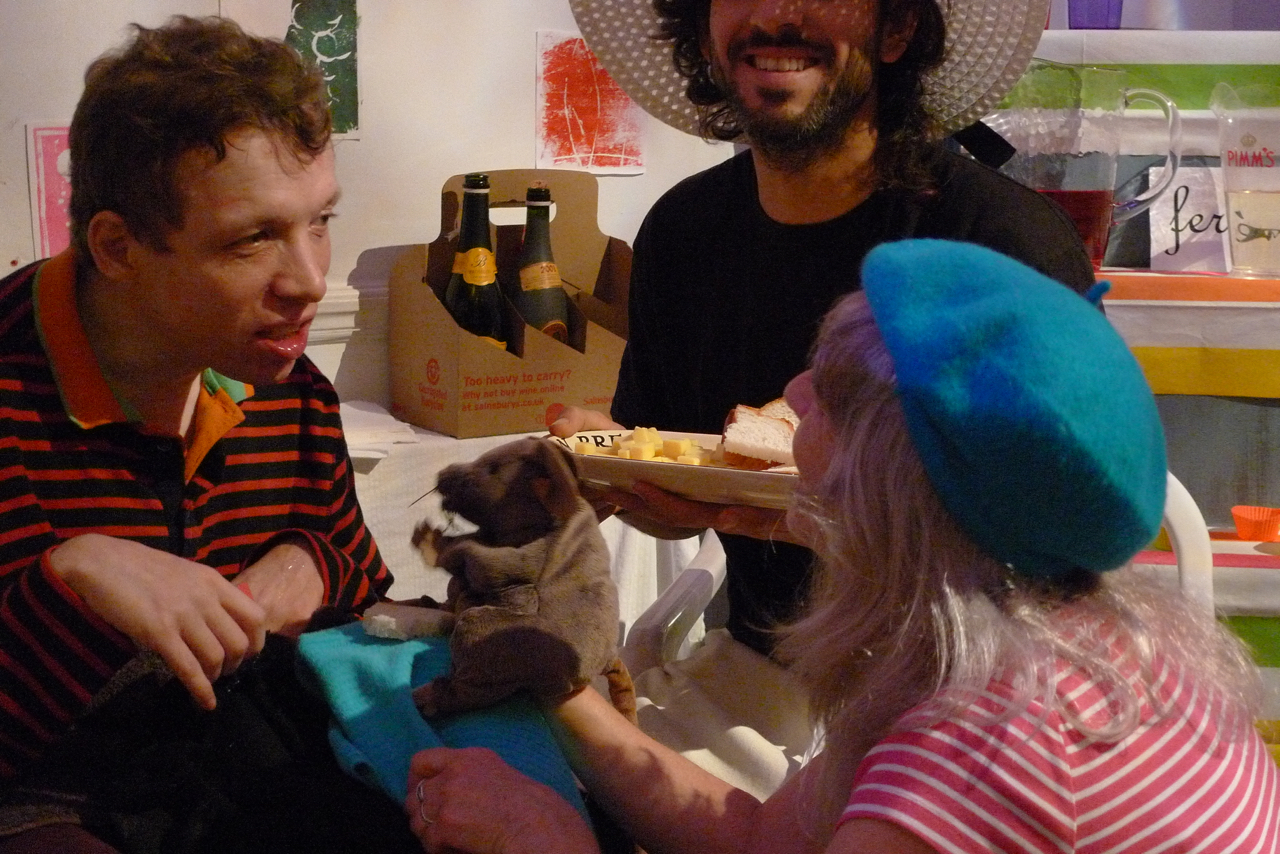
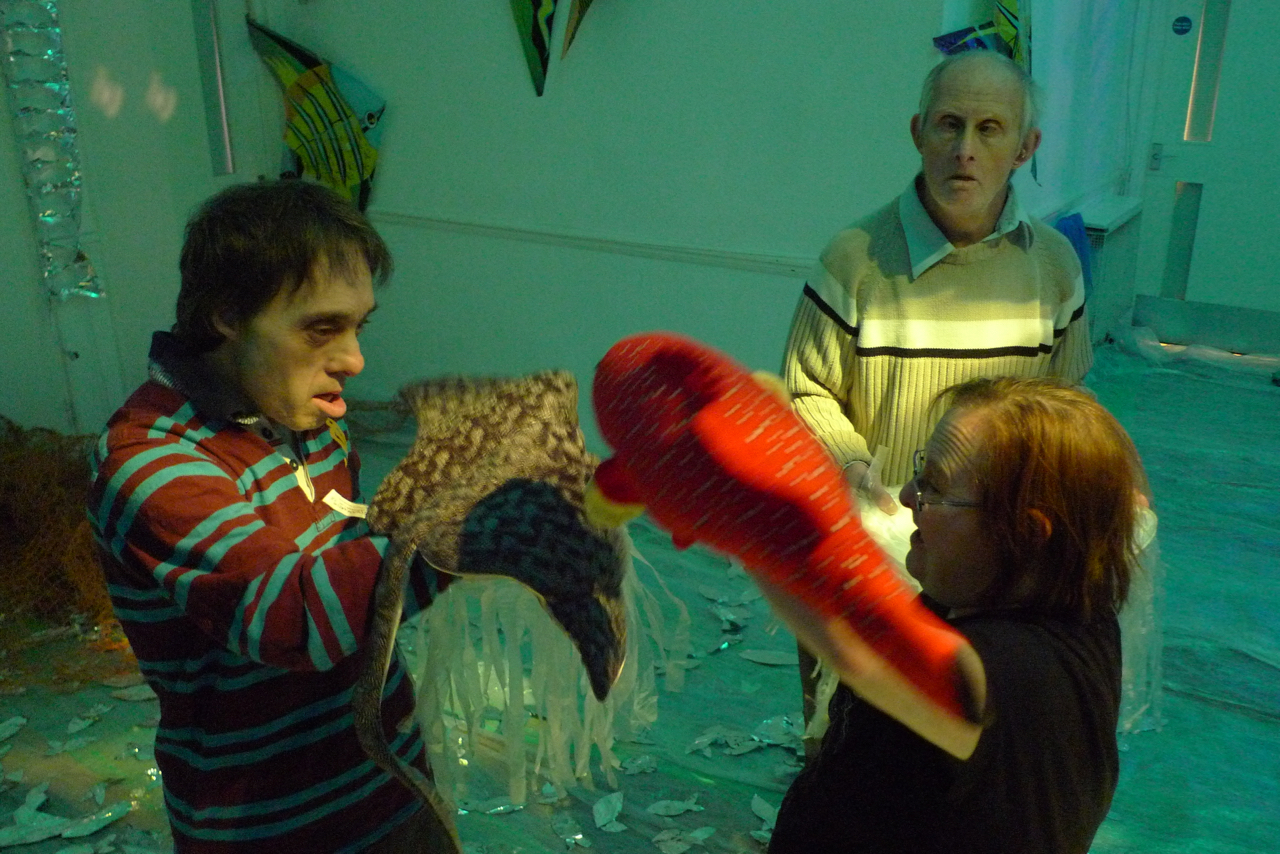
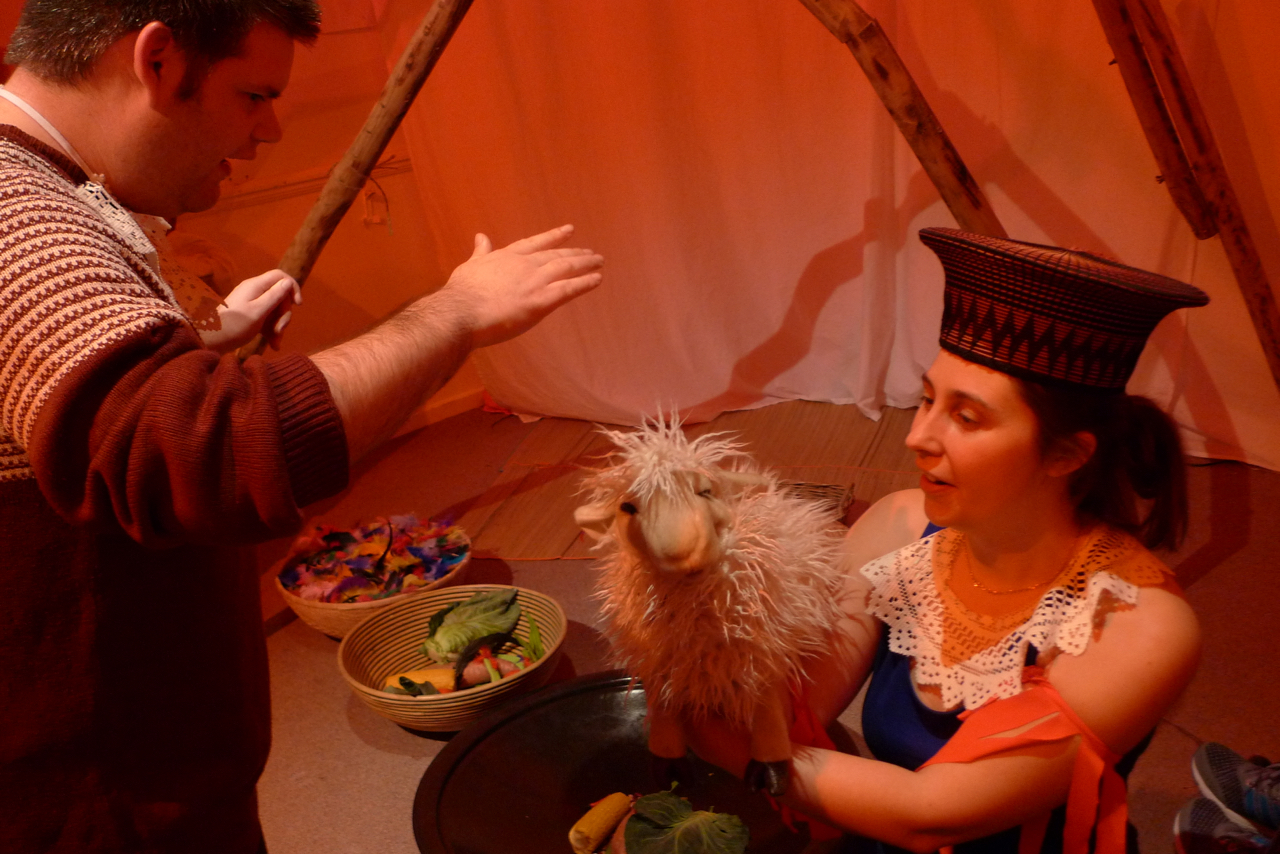
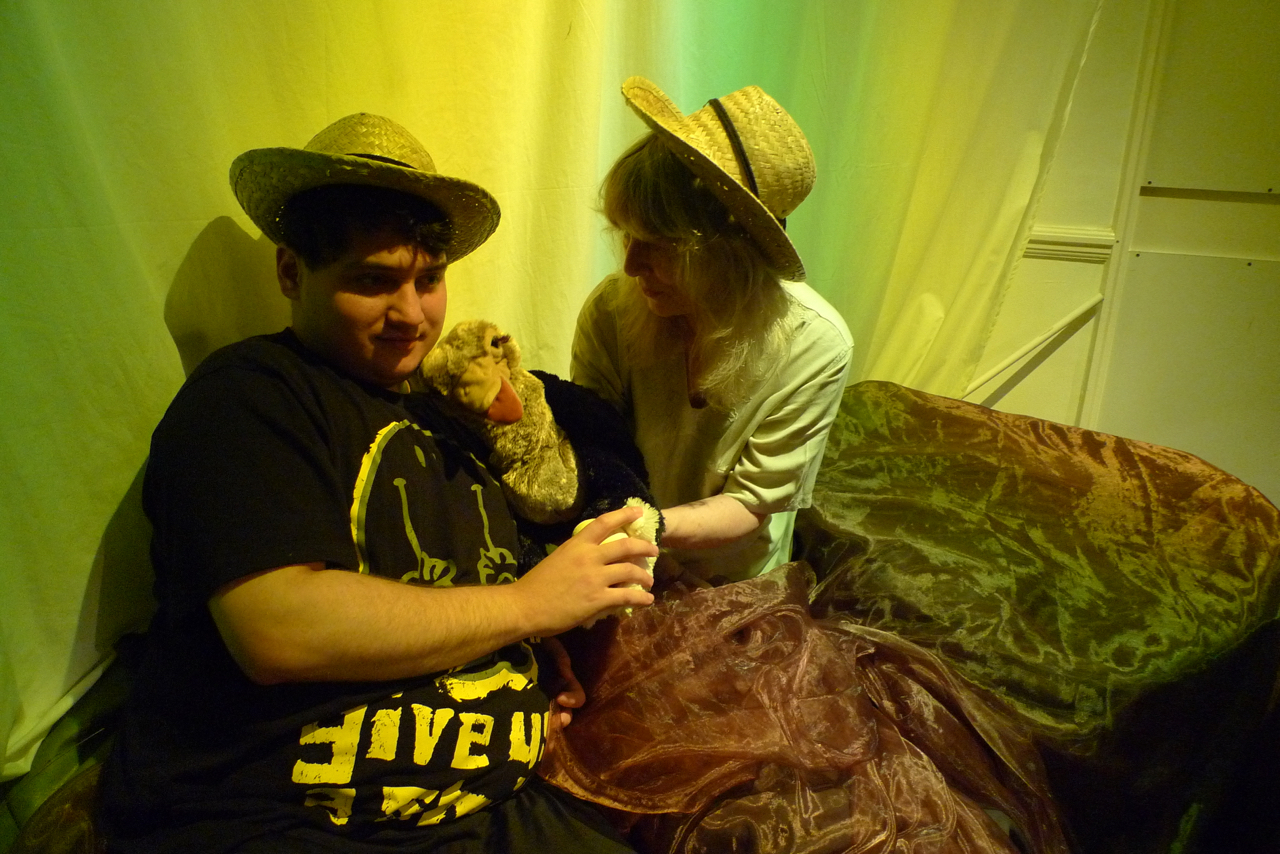
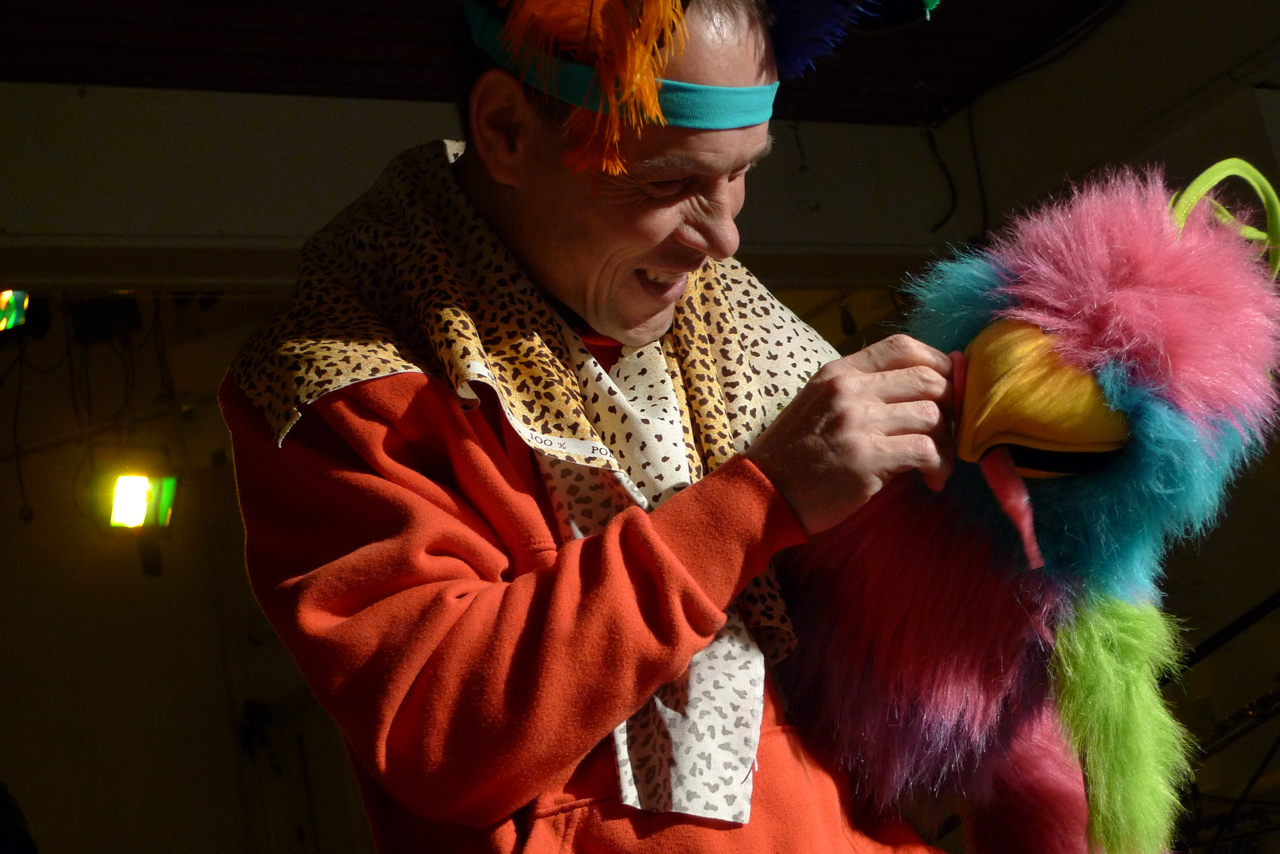

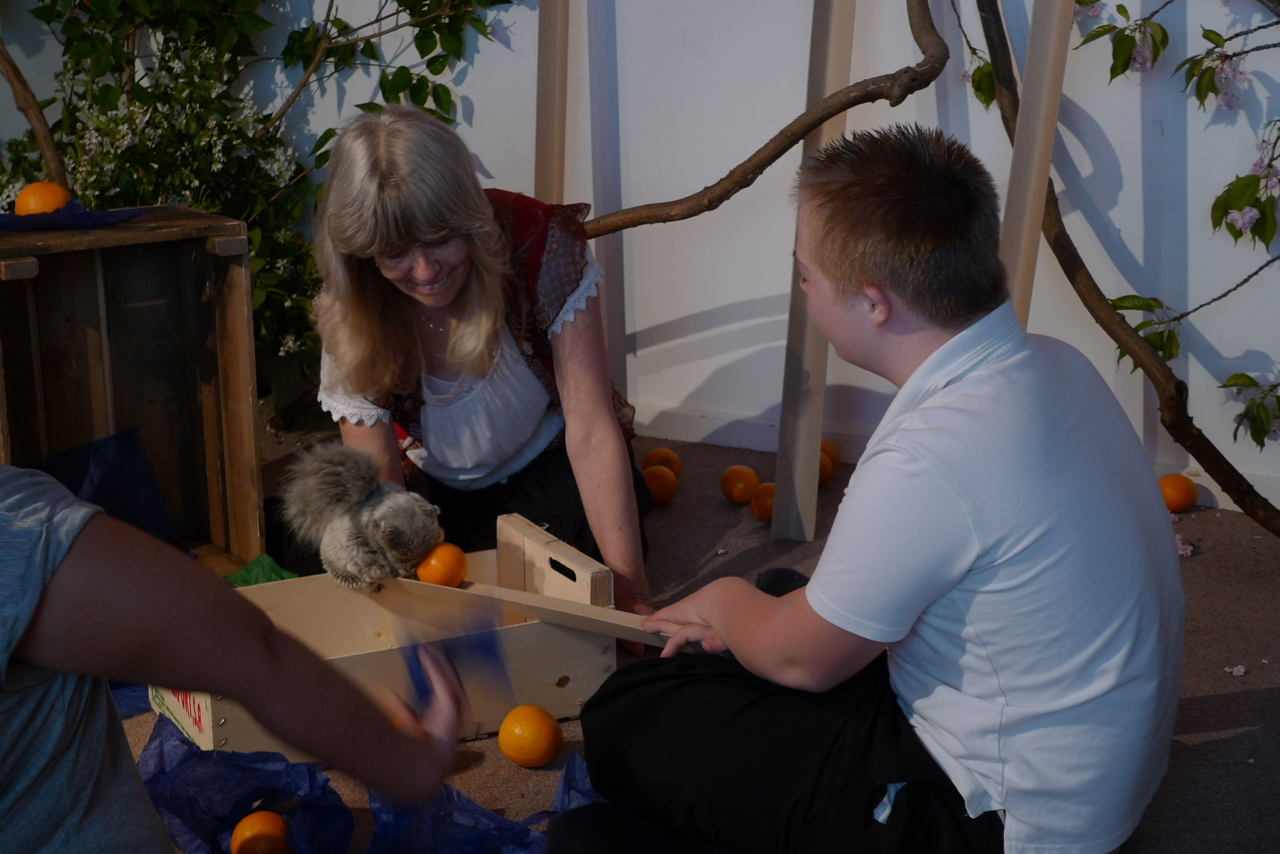
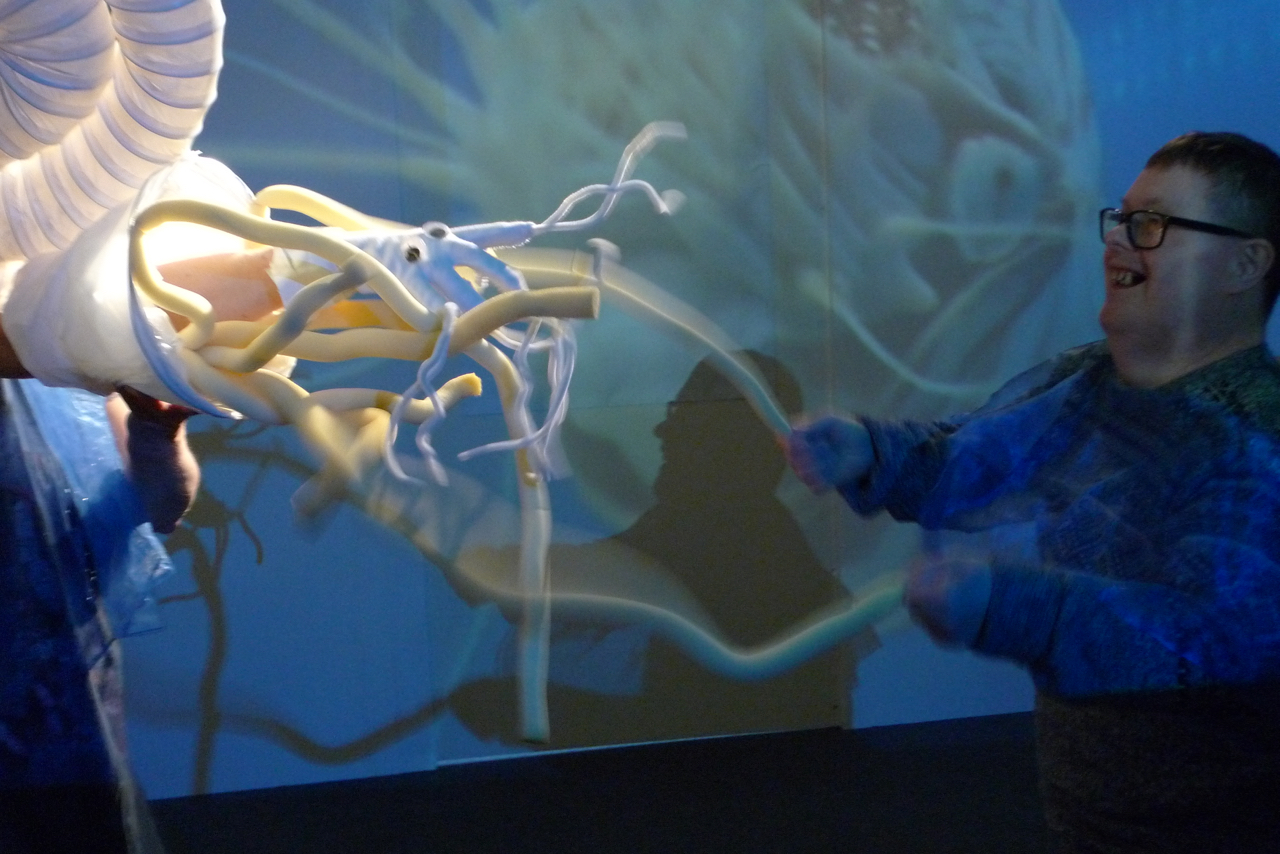
When introducing a puppet, attention should be focused specifically on him/her. It could be heard before seen, appear in a spotlight, or pulled out of a chest, but try to create a 'moment' for it, without other distractions.
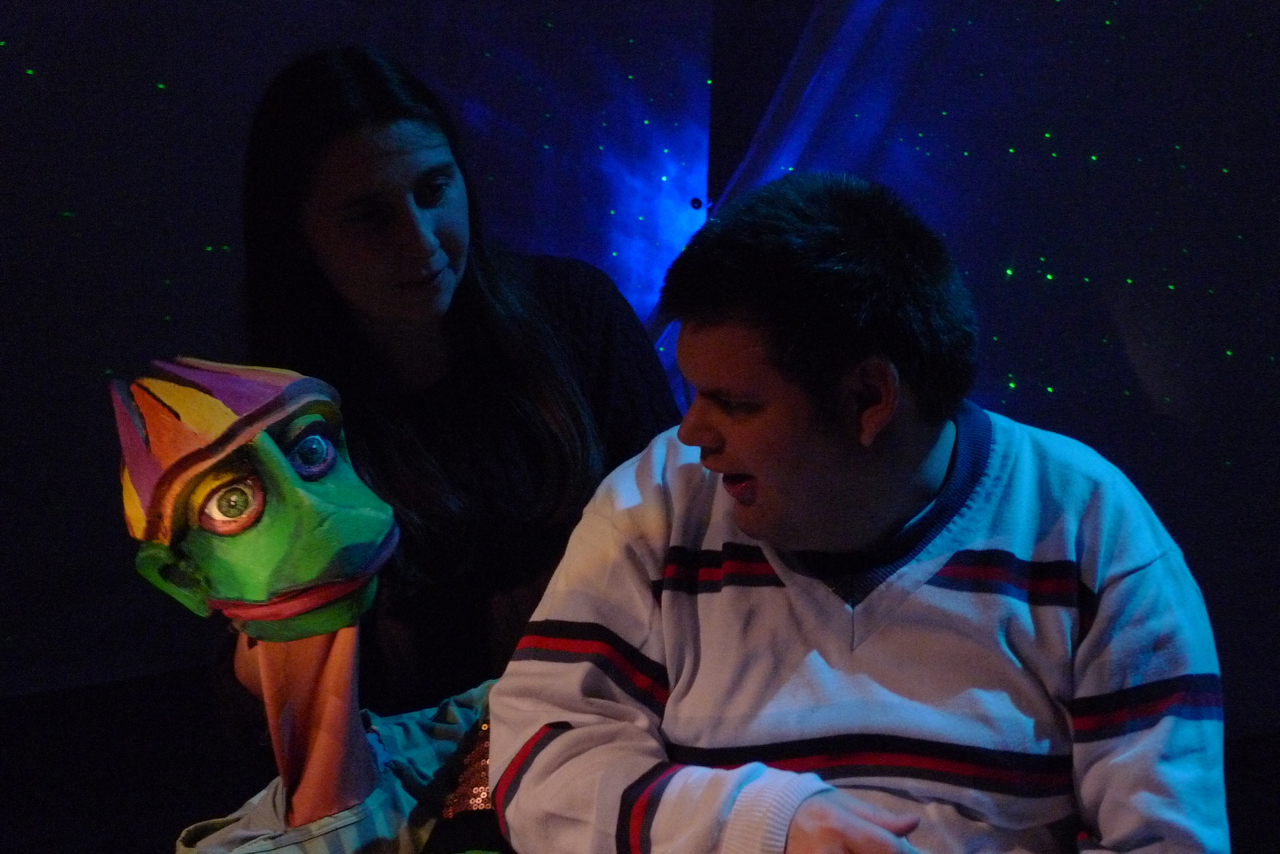
A shared activity or individual experience...
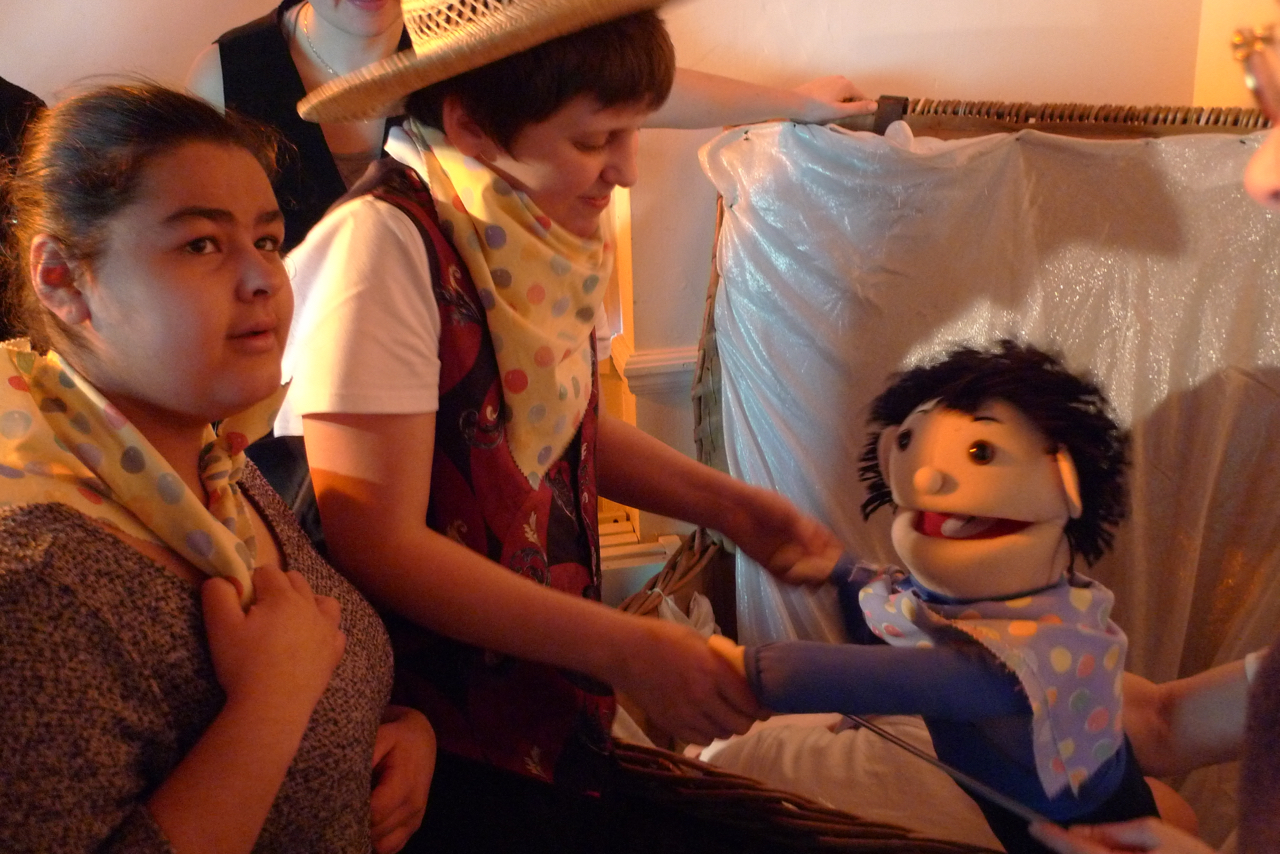
A puppet can be mobile, enabling engagement on the laps of wheelchair clients and play around the space, or stationary, in which case make room for clients to be able to come and touch and engage with the character.
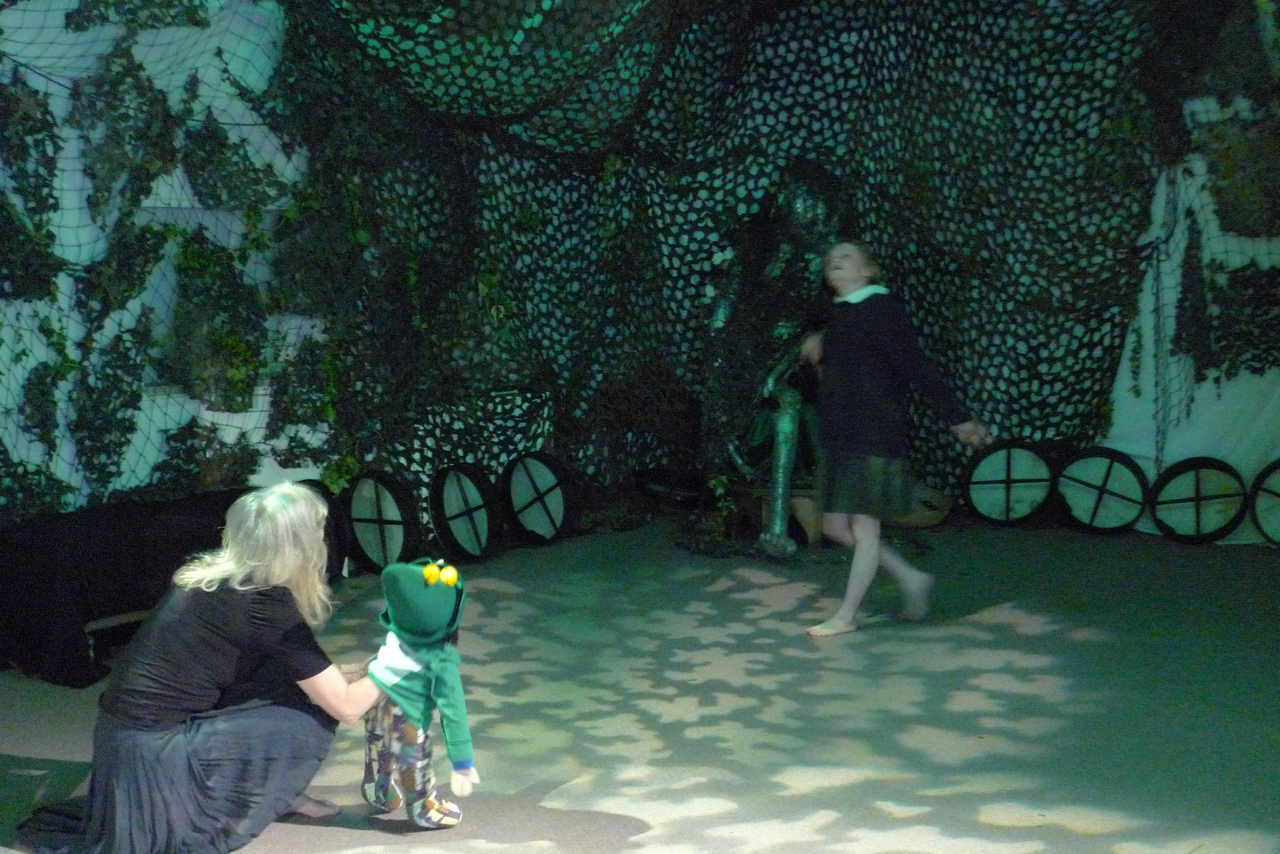
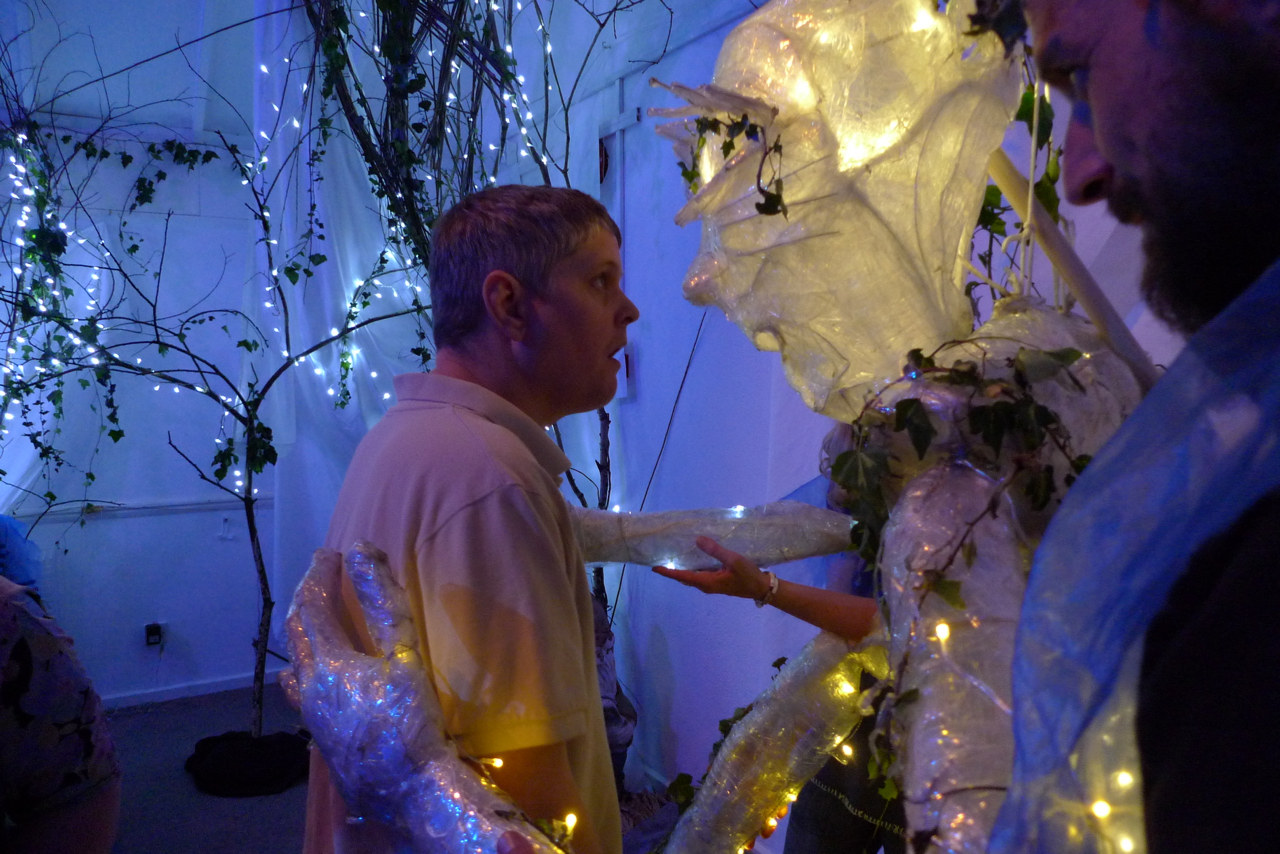
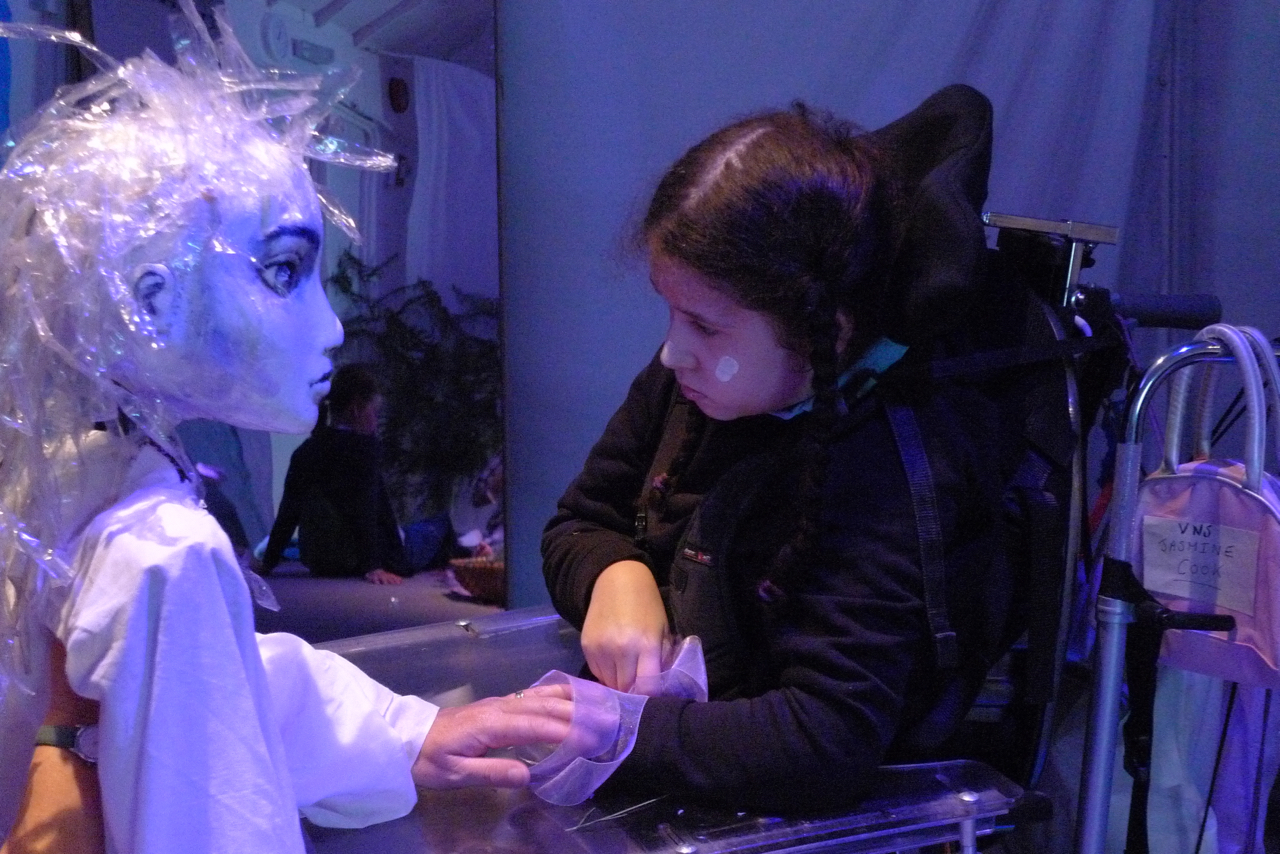

Giving puppets a context, within a narrative, can help participants engage appropriately, perhaps focusing on a specific activity associated with that puppet. Sharing an activity can increase participation - for example, the puppet holding an instrument to play.
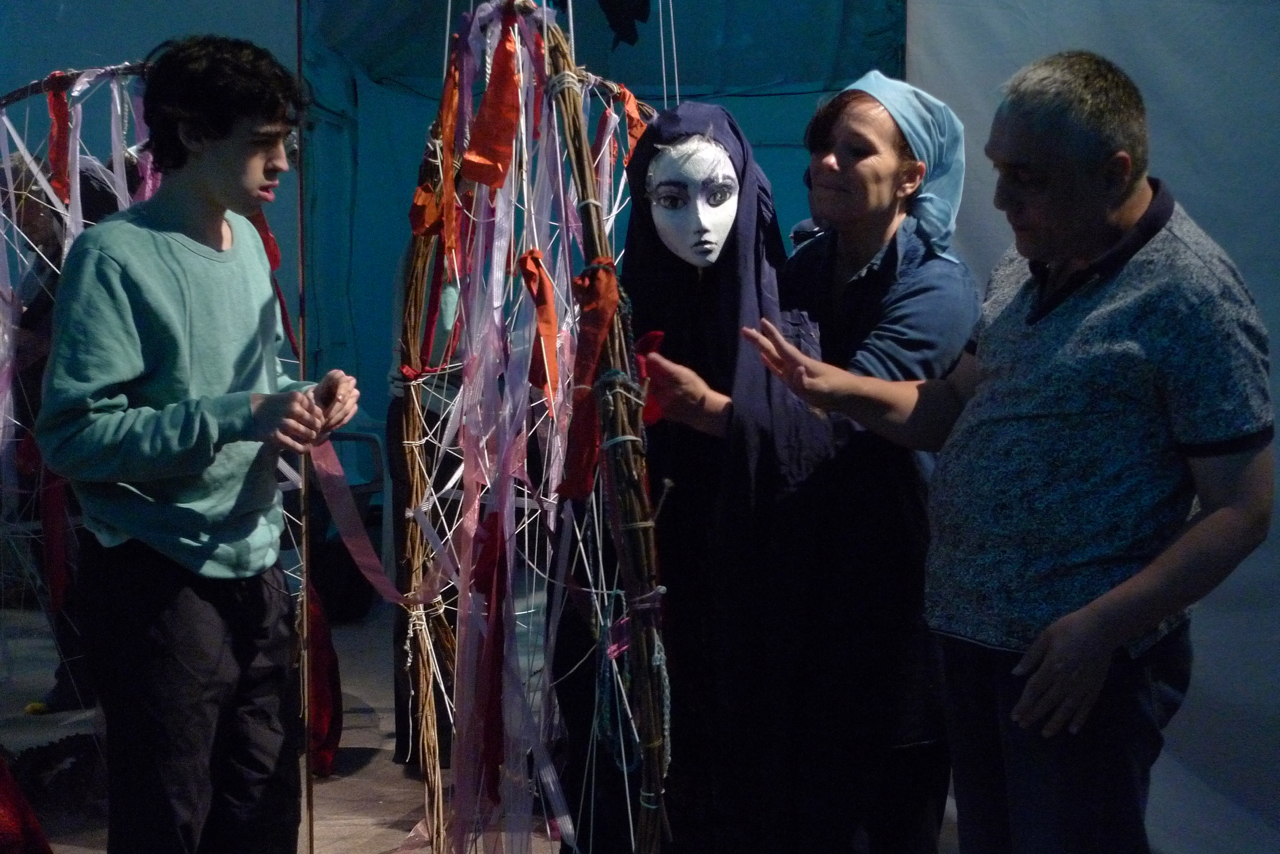
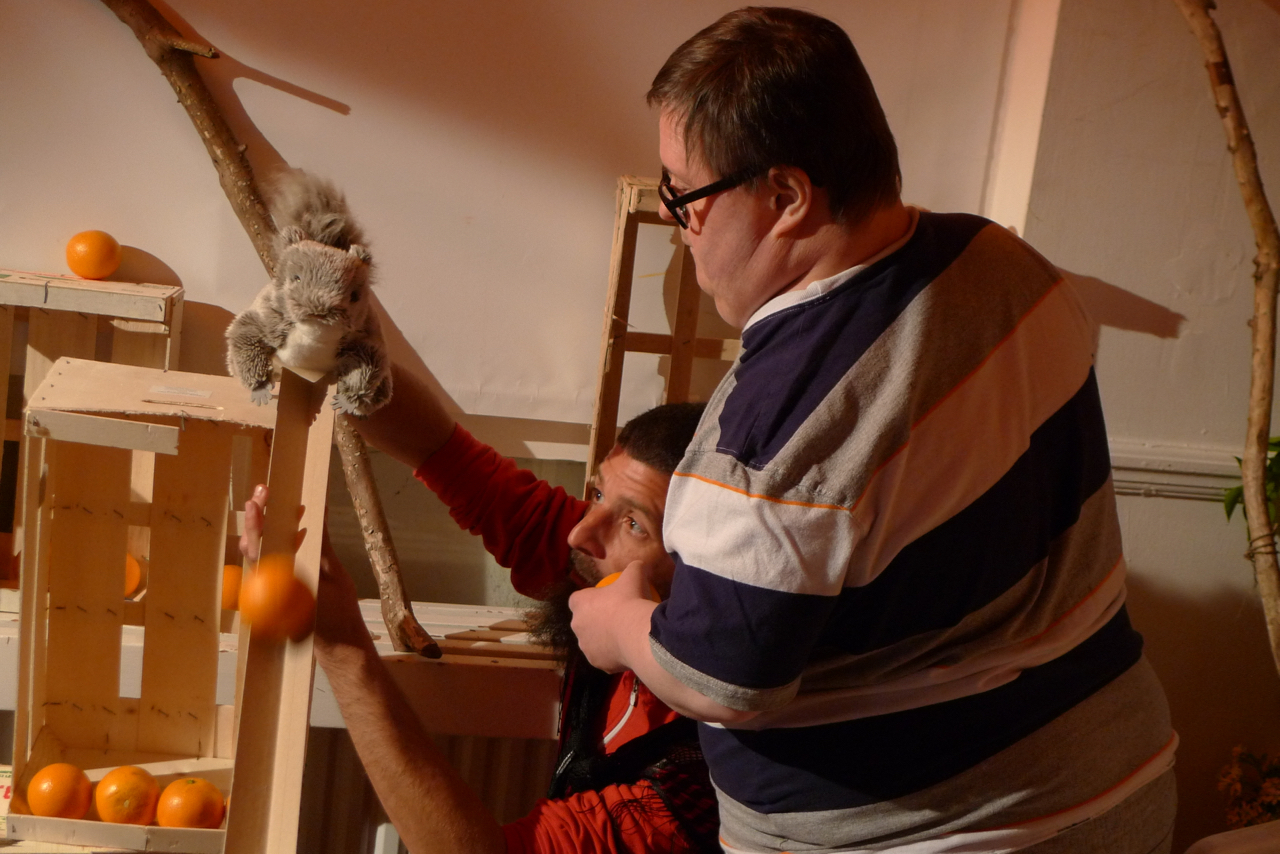
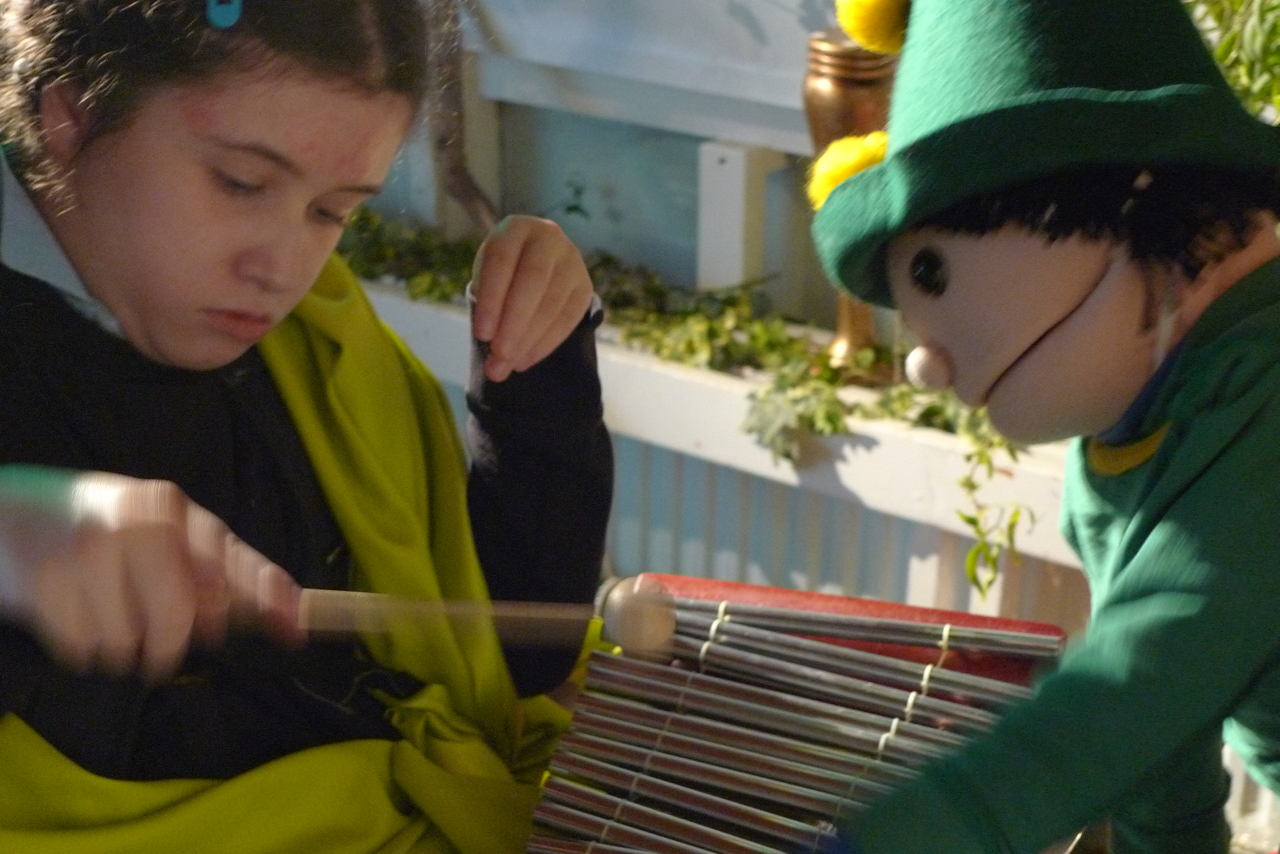
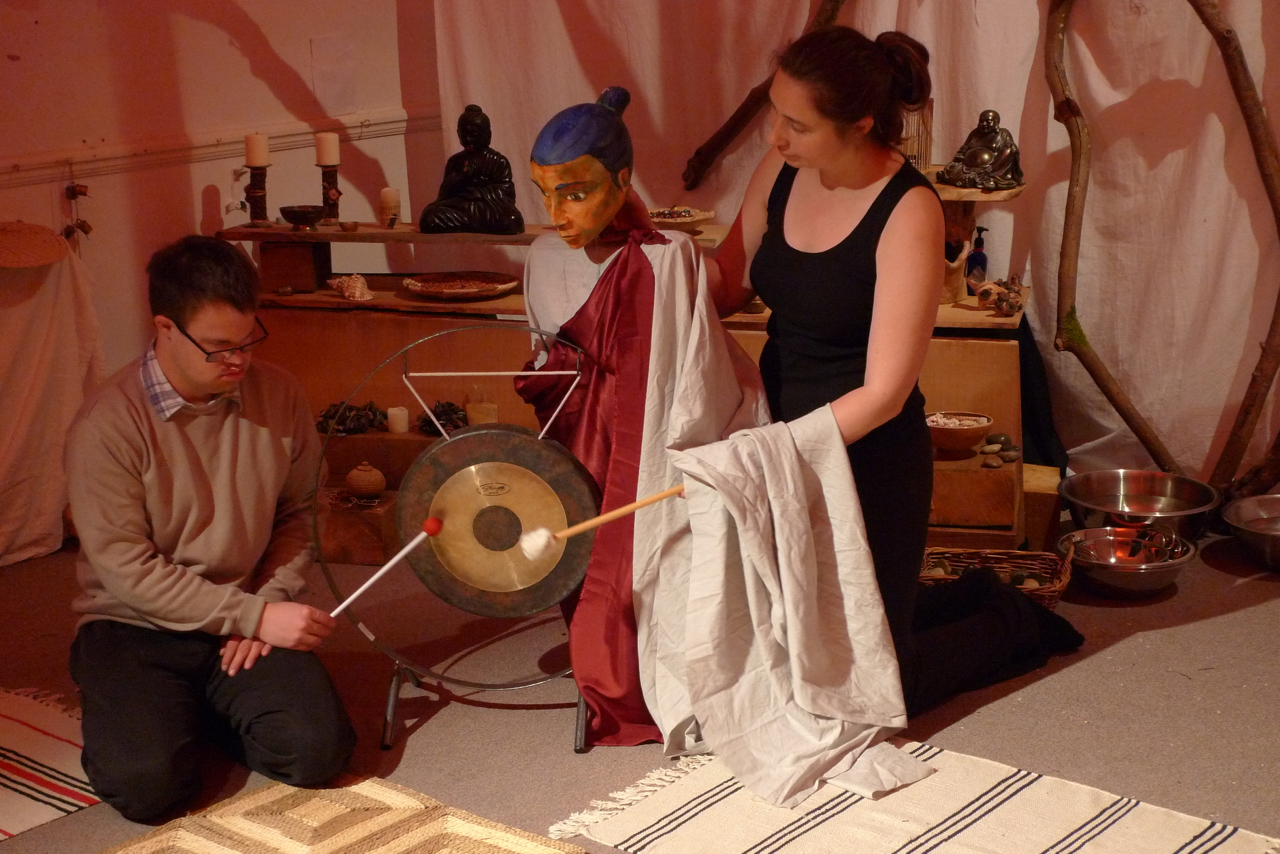
Letting the puppet give rewards like chocolate buttons, fruit, tastes that go with workshop i.e. bread and cheese, enables positive interactions which participants will remember.

